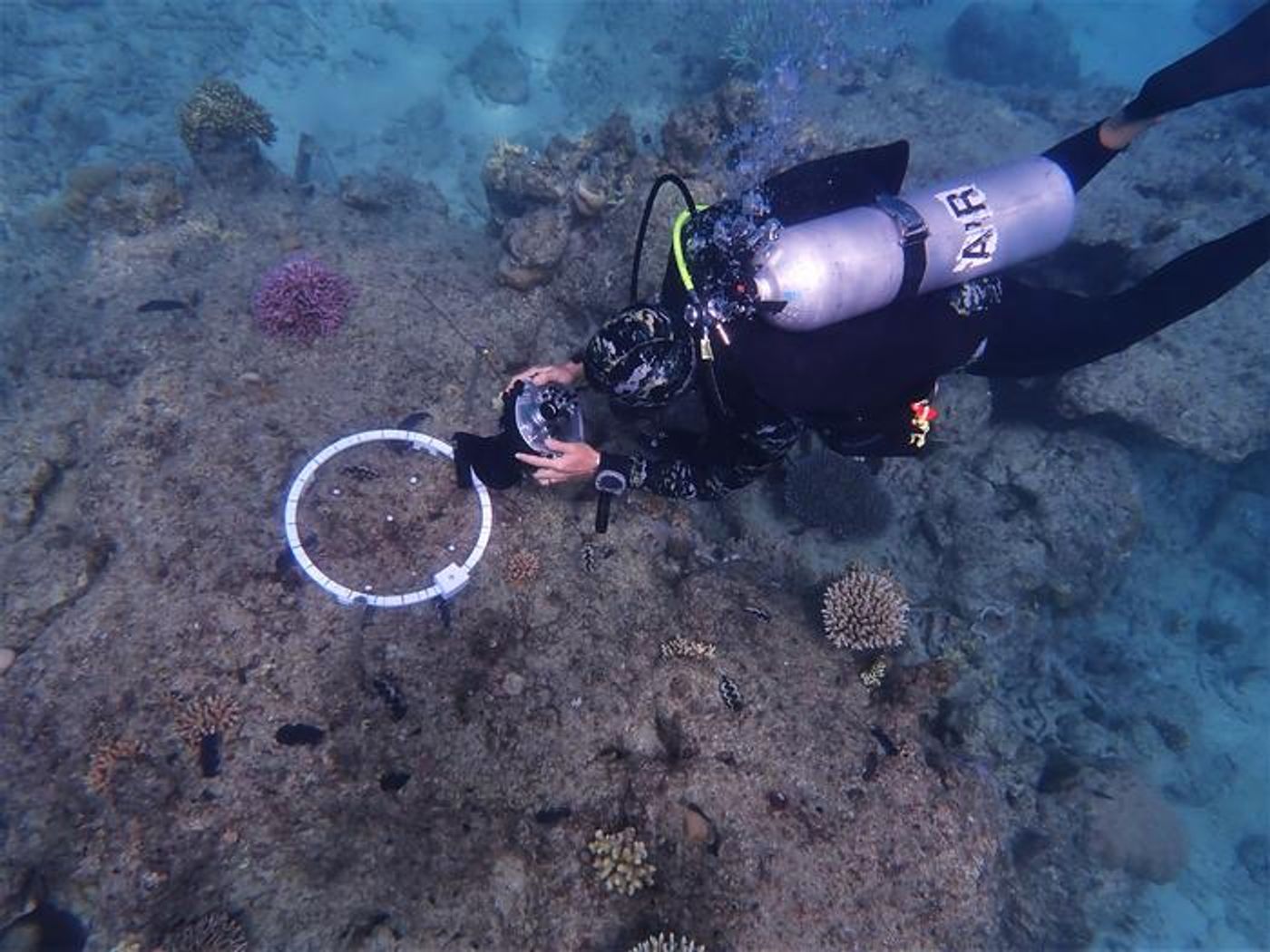Advanced Imaging Techniques for Studying Coral Recruitment on the Great Barrier Reef
A recent study published in Methods in Ecology and Evolution examines how new imaging methods can be used to observe newly settled corals, also known as coral recruitment, on the Great Barrier Reef at the submillimeter scale. This study was conducted by scientists at Southern Cross University and the Commonwealth Scientific and Industrial Research Organization (CSIRO) in Australia and holds the potential to help researchers better understand how microscopic coral larvae are discharged from coral reefs as a means of revitalization that have been injured due to climate change.
Study lead author and diver, Dr. Marine Gouezo, demonstrating the macro photogrammetry setup at Lizard Island in 2022. (Credit: CSIRO Lauren Hardiman)
“Coral recruitment occurs at a scale invisible to the human eye (less than 1mm) and, up until now, required the use of artificial plates attached to the reef to later be examined under microscopes to quantify newly settled corals,” said Dr. Marine Gouezo, who is a postdoctoral researcher at Southern Cross University and lead author of the paper.
For the study, the researchers used a method called macro photogrammetry, which is a combination of macrophotography and photogrammetry, to observe and analyze communities at the bottom of the water, also called benthic communities, at submillimeter scales using 3D models. Armed with this new method, the researchers successfully observed 2-month-old coral settlers as small as 0.5 millimeters (0.2 inches) using 3D models. Since part of the study was testing a new method, the researchers focused on a small reef area ranging in size from approximately 300 to 600 square centimeters (46.5 to 93 square inches).
Image of 2-month-old coral hiding in a reef crevice (center) on Lizard Island. (Credit: Dr. Marine Gouezo)
Video displaying 3D animations of approximately 400 square centimeters (62 square inchaes) of coral reefs as part of the study. (Credit: Dr. Marine Gouezo)
Contrary to traditional methods, which yield large margins of errors in their measurements, these new observations were made with a very small margins of errors, thus demonstrating the effectiveness of this new observation method.
“This macro photogrammetry technique enables us to examine the earliest stages of coral recruitment in field settings on the reef for the first time, rather than using proxies such as settlement tiles,” said Dr. Christopher Doropoulos, who is a senior research scientist at CSIRO Environment, and a co-author on the paper. “It will deepen our ecological understandings of what limits and what promotes successful larval settlement and early survival for optimizing the application and scale of on reef larval-based coral restoration operations.”
This research was successful due to advancements in 3D modeling and underwater cameras and opens the doors for more advanced coral reef research, including the use of automated processing and machine learning methods. Given the success of this study, the researchers hope to expand this new method to larger reefs, such as the Coral Larval Restoration on the Great Barrier Reef.
What new discoveries will scientists make about coral recruitment in the coming years and decades? Only time will tell, and this is why we science!
As always, keep doing science & keep looking up!
Sources: Methods in Ecology and Evolution, EurekAlert!, CSIRO, UNESCO, Pixpro










